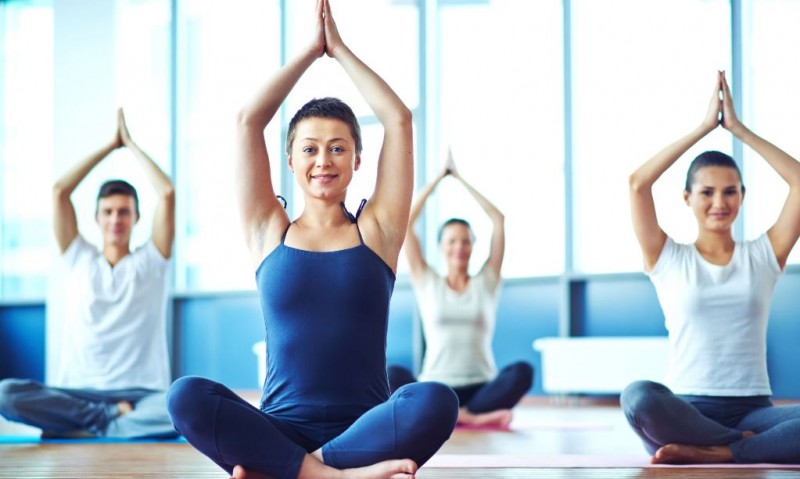
Sports and Fitness: Benefits of Yoga for Athletes
Sports and fitness enthusiasts are constantly seeking ways to improve their performance and stay ahead of the competition. While traditional training methods focus on strength, speed, and endurance, athletes are now turning to yoga as a complementary practice to enhance their overall performance. Yoga, an ancient practice that combines physical postures, breathing techniques, and meditation, offers a multitude of benefits for athletes. Let's explore how yoga can elevate an athlete's performance and well-being.
1. Introduction to Yoga for Athletes
Yoga is a holistic practice that cultivates physical, mental, and spiritual well-being. It originated in ancient India and has evolved over thousands of years. Initially, yoga was primarily associated with spiritual development, but its physical benefits have gained significant recognition in recent times. Athletes from various sports disciplines are embracing yoga as an essential part of their training regimen.
2. Enhancing Flexibility and Range of Motion
Flexibility plays a vital role in athletic performance. Yoga postures, known as asanas, gently stretch and lengthen the muscles, tendons, and ligaments, improving overall flexibility and range of motion. Increased flexibility helps athletes perform movements with greater ease and reduces the risk of muscle strains and injuries.
3. Developing Core Strength and Stability
A strong and stable core is crucial for athletic performance. Yoga poses engage and strengthen the core muscles, including the abdominal, back, and pelvic muscles. A robust core enhances stability, balance, and power, which are essential for sports that require explosive movements, such as sprinting, jumping, and throwing.
4. Improving Balance and Coordination
Balance and coordination are key factors in many sports, including gymnastics, martial arts, and basketball. Yoga incorporates poses that challenge balance and proprioception, helping athletes develop better body awareness and coordination. Improved balance reduces the risk of falls and enhances agility and precision in movements.
5. Boosting Mental Focus and Concentration
Athletes often face high-pressure situations that require unwavering focus and concentration. Yoga practices, such as mindful breathing and meditation, enhance mental clarity, focus, and presence. By calming the mind and reducing stress, yoga helps athletes stay mentally composed, make split-second decisions, and perform at their best under pressure.
6. Promoting Injury Prevention and Recovery
Injuries are a common setback for athletes, often disrupting training and performance. Yoga promotes injury prevention by strengthening the muscles around joints, improving body alignment, and correcting imbalances. Additionally, yoga's gentle stretching and relaxation techniques aid in the recovery process, reducing muscle soreness and speeding up healing.
7. Enhancing Breathing and Endurance
Efficient breathing is vital for athletes, as it directly impacts endurance and performance. Yoga incorporates various breathing exercises, known as pranayama, which expand lung capacity, improve respiratory efficiency, and increase oxygen flow to the muscles. With enhanced breathing techniques, athletes can sustain higher levels of exertion and optimize their endurance capacity.
8. Stress Reduction and Relaxation
Competitive sports can subject athletes to immense physical and mental stress. Yoga provides a sanctuary for athletes to unwind, release tension, and find inner peace. The practice of yoga triggers the relaxation response, lowering stress hormone levels and inducing a state of calmness. Regular yoga sessions help athletes manage stress, enhance recovery, and promote overall well-being.
9. Yoga Practices for Athletes
There are several different styles of yoga, each with its own emphasis and benefits. Athletes can choose from various yoga practices based on their specific needs and preferences. Some popular yoga styles for athletes include:
Hatha Yoga: Focuses on physical postures and breathing exercises, suitable for beginners.
Vinyasa Yoga: A dynamic flow-based practice that synchronizes movement with breath, promoting strength and flexibility.
Yin Yoga: Targets connective tissues and deep stretching, facilitating relaxation and increasing flexibility.
Restorative Yoga: A gentle practice using props for support, allowing the body and mind to relax deeply.
10. Incorporating Yoga into Training Programs
To maximize the benefits of yoga, athletes can integrate it strategically into their training programs. Yoga sessions can be scheduled on rest days or as a part of active recovery. It is important to strike a balance between yoga and sport-specific training to ensure optimal performance and prevent overexertion.
11. Real-life Examples of Athletes Benefiting from Yoga
Numerous professional athletes have embraced yoga and witnessed its positive impact on their performance. Notable examples include NBA basketball player LeBron James, Olympic swimmer Michael Phelps, and professional football player Russell Wilson. These athletes credit yoga for improving their physical abilities, mental resilience, and injury prevention.
13. Conclusion
Yoga is a transformative practice that offers immense benefits to athletes. By integrating yoga into their training routines, athletes can enhance their flexibility, core strength, balance, mental focus, and overall well-being. Yoga serves as a powerful tool for injury prevention, stress reduction, and improving performance on and off the field. Embrace the power of yoga and unlock your full athletic potential.
Sports: The Evolution of Sports Analytics
Rev Up the Thrills: Polaris Sportsman vs. Yamaha YFM Raptor – Battle of the All-Terrain Titans
Indian Team Emerges Victorious in Asian Kabaddi Championship, PM Greets